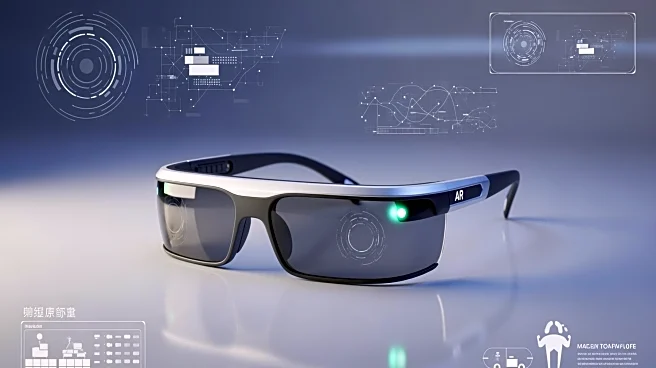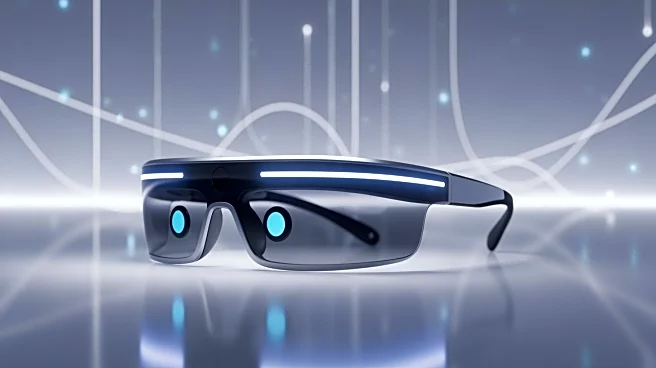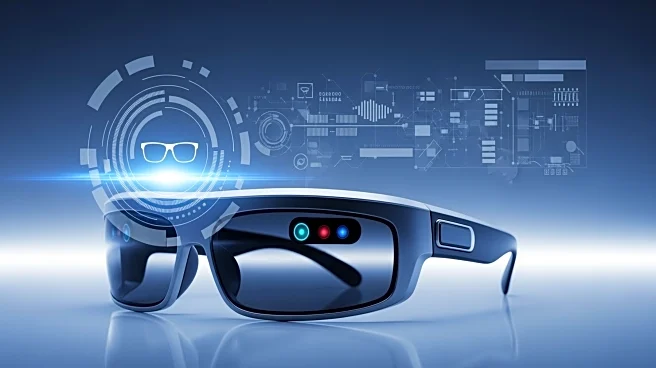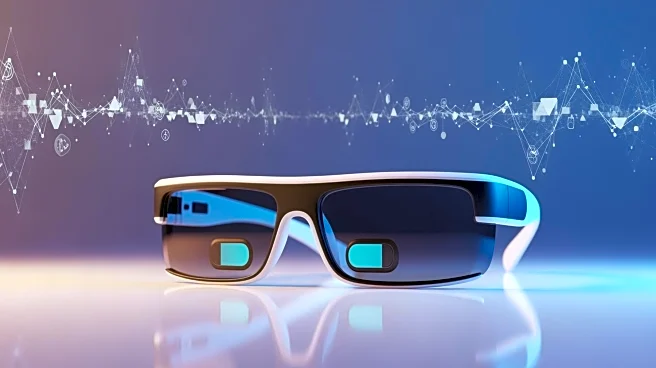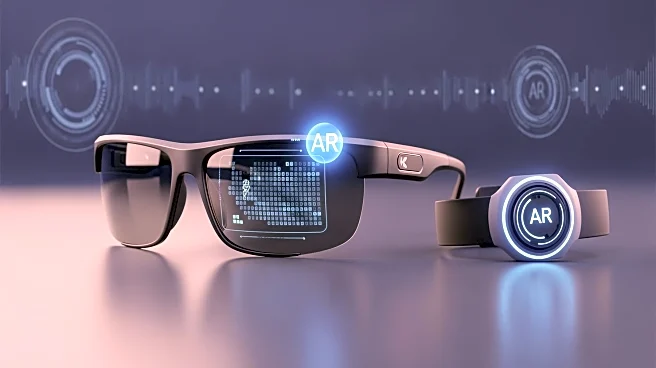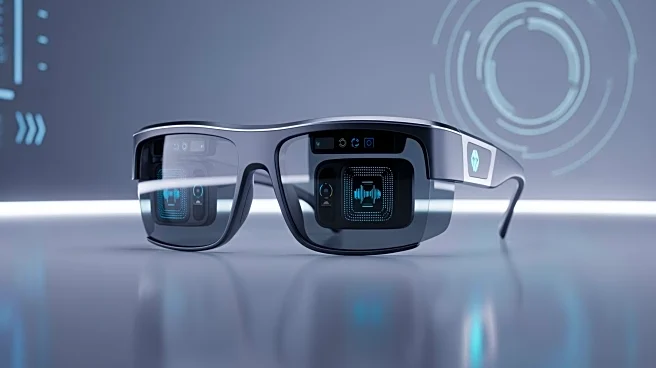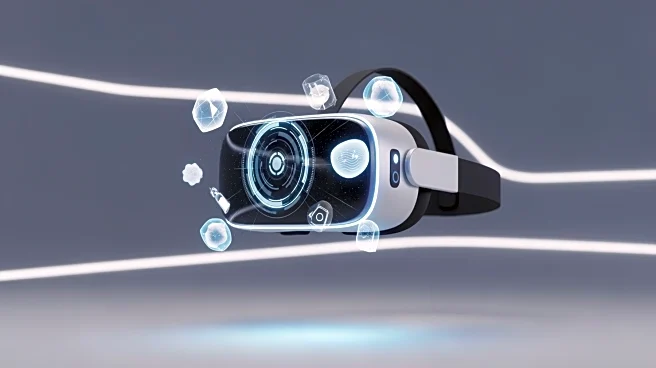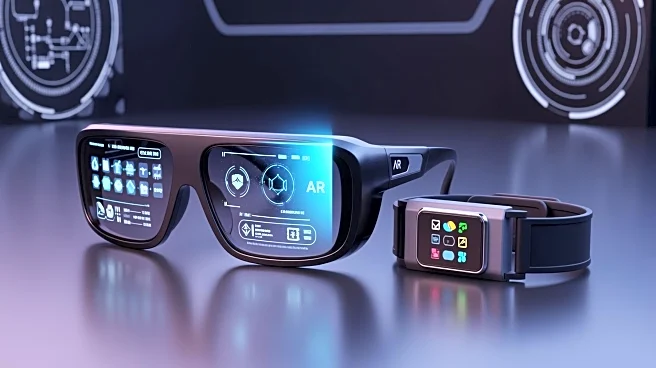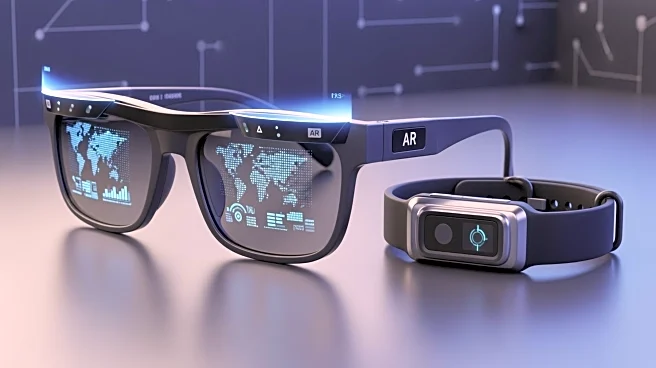What's Happening?
Meta and Snap have announced significant advancements in augmented reality (AR) technology, with new smart glasses set to impact consumer markets. Meta's Project Aria Gen 2 glasses now include heart rate
sensors, allowing for real-time biometric interactions. This innovation could enhance fitness and accessibility applications by tailoring experiences based on user stress or excitement levels. Additionally, Meta has introduced a prototype featuring a display and wristband controller, simplifying AR controls. Snap plans to release lightweight consumer AR glasses in 2026, aiming to make AR more accessible and comfortable for everyday use. These developments are part of a broader industry push to integrate AR into daily life, with companies like Niantic also enhancing AR applications with voice-driven features.
Why It's Important?
The advancements in AR technology by Meta and Snap signify a potential shift in how consumers interact with digital content. By integrating biometric sensors and simplifying user interfaces, these companies are making AR more practical and appealing for everyday use. This could lead to increased adoption in sectors such as tourism, fitness, and navigation, where real-time data and interactive experiences are valuable. The introduction of lightweight, consumer-friendly AR glasses by Snap could further democratize access to AR technology, potentially leading to a surge in developer interest and innovation. As AR becomes more integrated into daily life, it could transform industries by providing new ways to engage with digital content and environments.
What's Next?
As Meta and Snap prepare to bring their AR glasses to market, the focus will likely shift to consumer trials and feedback. The success of these products will depend on their ability to deliver seamless and valuable experiences to users. Developers will play a crucial role in creating applications that leverage the new capabilities of these devices. The industry will be watching closely to see how these products perform and whether they can achieve mass-market adoption. If successful, these AR glasses could pave the way for further innovations and a more widespread integration of AR into everyday life.
